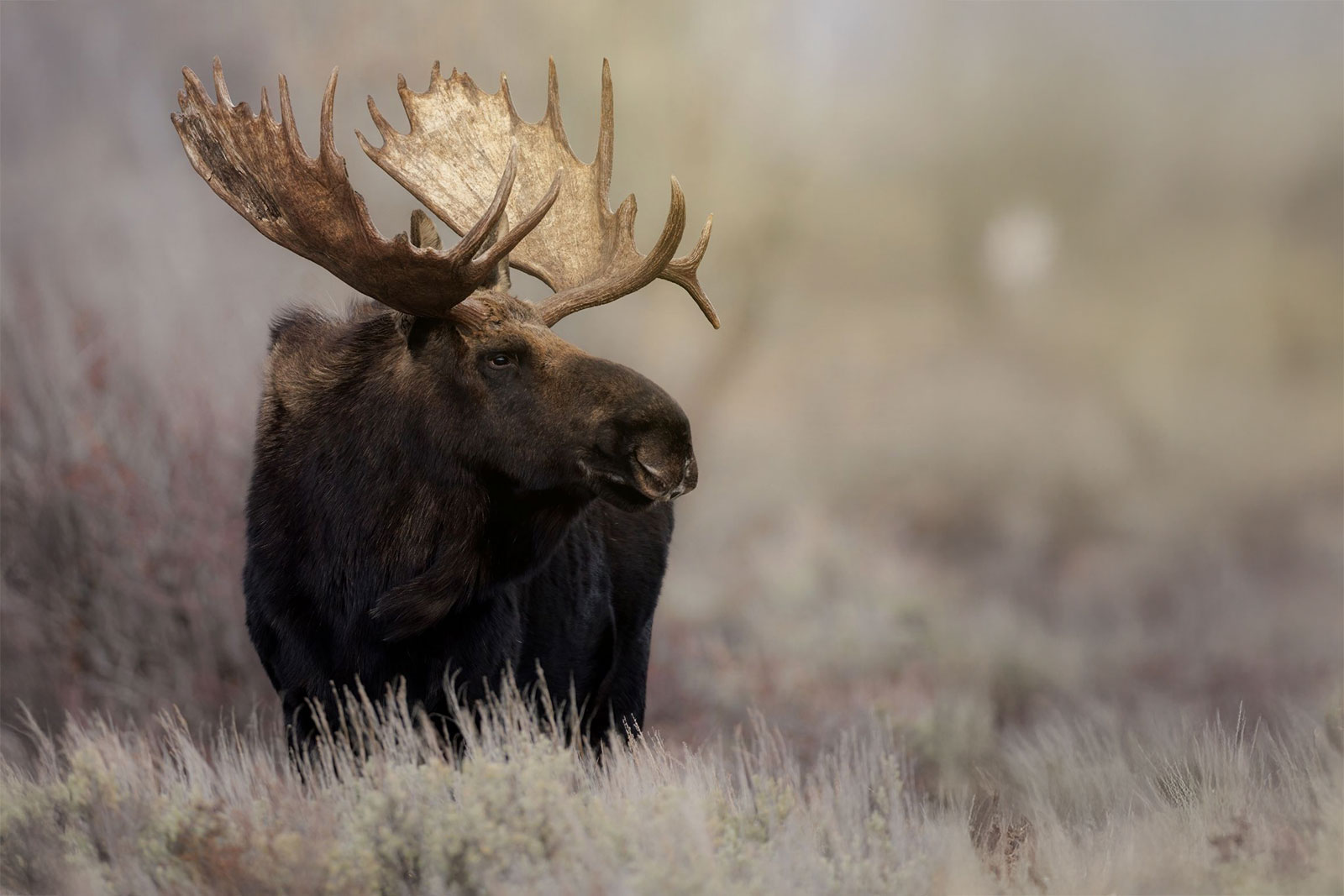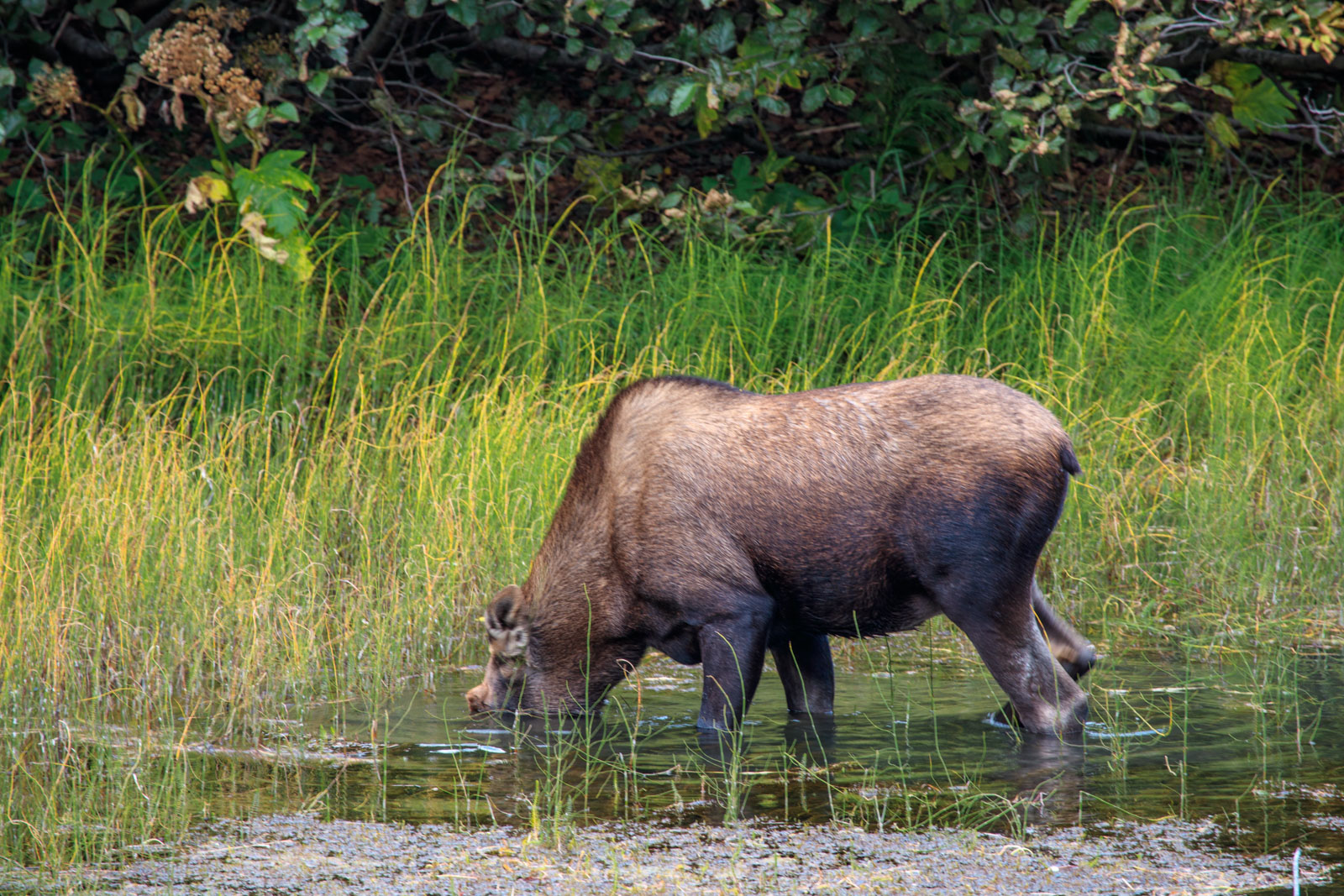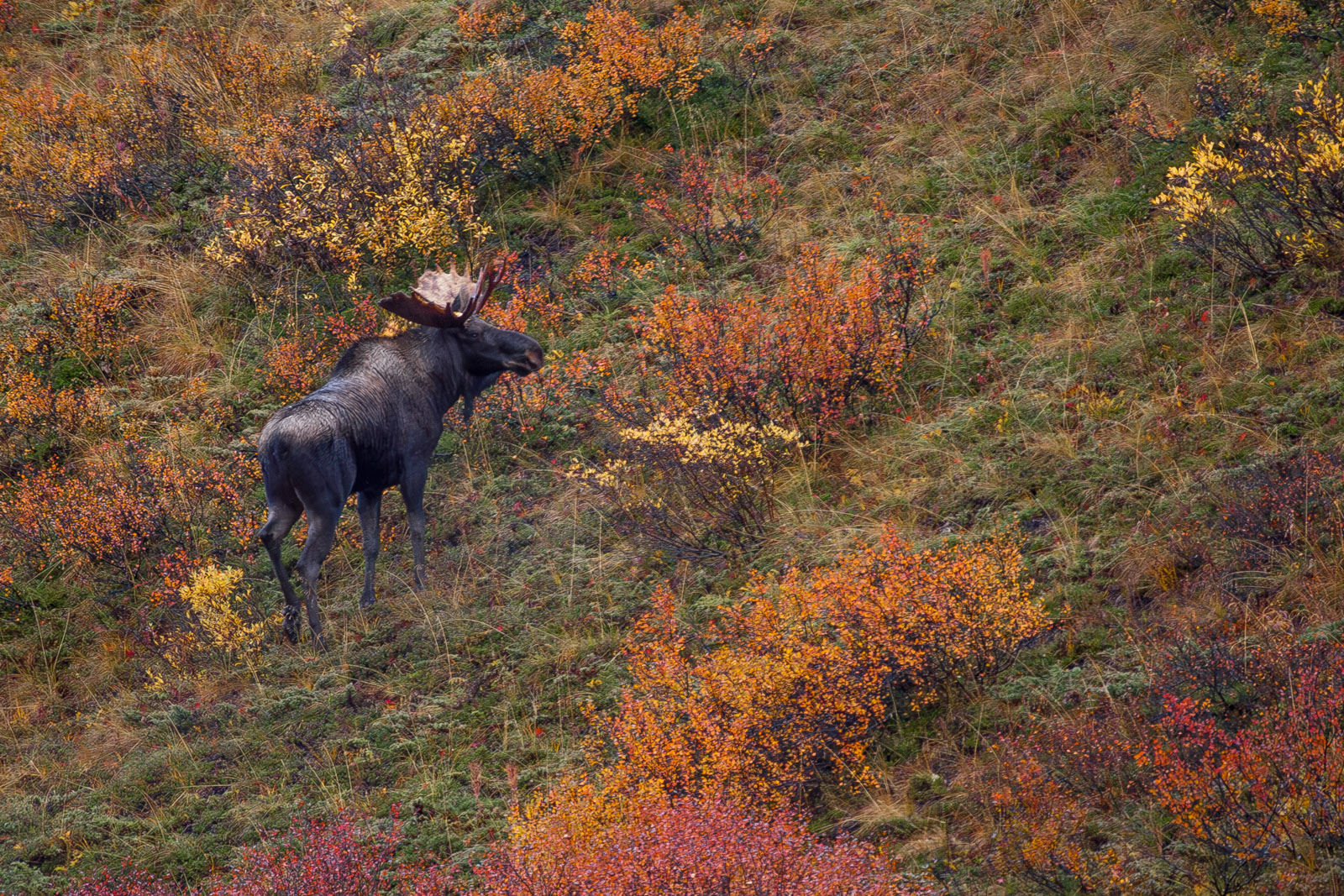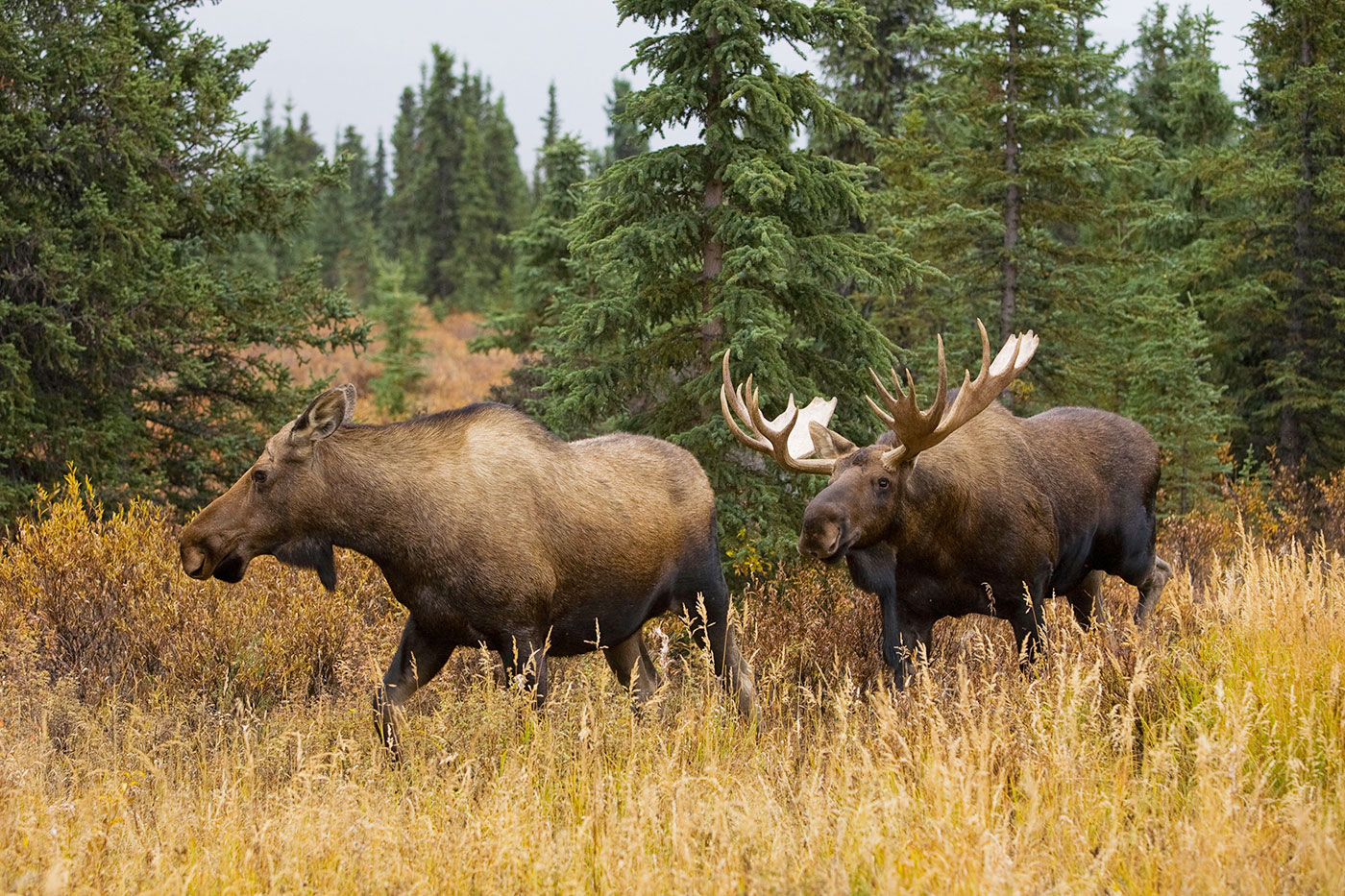Moose in Wrangell-St. Elias National Park

Wrangell-St. Elias National Park and Preserve, located in the southeast corner of mainland Alaska, is a vast wild landscape of mountains, alpine meadows, ice fields, wetlands and forests. The majesty of this untouched wilderness sprawls from one mountain range to the next, rolling far beyond sight, finally reaching the shores of the Gulf of Alaska to the south, and the international border with Canada to the east. This is the largest region managed by the National Park Service (NPS), measuring over 20,500 square miles of untamed nature.
Within the vast wildlands of Wrangell-St. Elias Preserve, the Alaska Moose (alces alces gigas) prefers the lowland boreal forests where leafy trees such as willow and birch, ground cover vegetation and aquatic plants are found in abundance. Like all creatures in Wrangell-St. Elias, moose eat all they can during the abundance of summer, preparing for the hardships winter will bring. It takes a lot of grazing for a male moose, or bull, to reach full size, standing well over 6 feet at the shoulder and weighing over 1,400 pounds. Female moose, or cows, are significantly smaller, usually under 6 feet at the shoulder and weighing 1,050 pounds. Cows give birth to 1-3 calves in May. Mother moose are fiercely protective of their calves, but predators (wolves, black bears and brown bears) are often successful in gaining a
little meal. Surviving calves stay with their mothers for about a year, until her next calf is due to be born. Bull moose live lives separate from the cows and their calves. Only in September do moose, male and female, gather together for mating, called the rut. By this time the bull is as big and splendid as he can be, crowned with
magnificent antlers, ready to claim cows as his own and defend against rival bulls who might challenge his claim.
When the rut is over, mating is accomplished for the season, bulls and cows go their separate ways. Soon the bulls will shed their antlers for this year. Soon all will face the brutal cold of winter falling on Wrangell-St. Elias. In the sweet spot between the rut and deep winter is Hunting Season in Alaska. Hunting is an age-old tradition in Wrangell-St. Elias, practiced for centuries by indigenous peoples who experienced moose hunting as a spiritual endeavor that provided for the whole village. Today the NPS works closely with Alaska native groups to ensure that hunting practices are respectful of land and animals.
The NPS aims to maintain this vast wilderness in its natural state, to protect its wildlife populations, and to make it accessible for people to appreciate its wonders. Importantly, roughly two thirds of this area is designated PARK, where sport hunting is prohibited--only local subsistence hunters are allowed. The remaining third is designated PRESERVE, where sport hunting is permitted. Hunting in the Preserve is governed jointly by the NPS, which manages the land, and the Alaska Department of Fish and Game (ADF&G), which issues hunting licenses. Restrictions on hunting, such as the number of moose that can be harvested, or firearms vs. bow and arrow use, serve to maintain moose populations in different Game Management Units.
Maintaining healthy moose populations in Wrangell-St. Elias is a complex task involving many different strategies. Challenges include the vast size and remote location of Wrangell-St. Elias, and the constant changes to this ecosystem caused by natural processes and by human activity. Climate change is affecting moose habitats in Wrangell-St. Elias. Rising temperatures shift the growing season out of sync with moose habits. Some plants may struggle in warmer conditions, providing less nutrition to foraging moose.
Warmer winters produce more frequent ice storms or rain-on-snow events, making winter food harder for moose to access. These factors may result in nutritional stress and higher mortality rates for moose. The NPS and ADF&G are monitoring these changes and adjusting their wildlife management strategies to mitigate these effects on moose populations.
Human activity is fragmenting moose habitat and limiting moose activity, even in this vast and remote corner of the world. Historically, we have built mines and roads that cut off routes moose traveled to reach critical feeding and breeding areas. Today, human recreational activities can disturb these same ancient rhythms. NPS management strategies aim to limit these impacts on moose by restricting the use of motorized vehicles in sensitive areas, controlling hunting pressure on moose populations, and ensuring that development projects in and around Wrangell-St. Elias take wildlife concerns into account.
Humans are not the only ones hunting moose. Moose are natural prey for wolves and brown bears. These wolves and bears are also valuable residents of Wrangell-St. Elias, and are protected species. This delicate balance of predator and prey populations is a vital work of the NPS and ADF&G. Direct interventions such as predator control or relocation are rarely chosen due to ethical and legal opposition. Instead, they focus on enhancing moose habitat and improving the health of the moose population. Habitats affected by invasive plant species and degraded wetlands are being restored to their natural state. These efforts help to ensure that moose have access to the resources they need to thrive.
Moose hunting belongs in Wrangell-St. Elias as an essential piece in the NPS's complicated puzzle of wildlife and habitat management. By balancing sustainable hunting practices with habitat conservation strategies, the NPS and its partners are working to ensure that moose populations remain healthy and resilient, even when facing climate change and other human-caused impacts on the environment. Thus, moose will remain an iconic part of Alaska's wilderness for ages to come.


